Mission: To identify a viable, cheap, DIY alternative to GW Citadel Contrast Paints: Okay, mission has been stated, onto the actual work!
Research: As is my usual, I began digging around on Google to see if anyone else has wondered about what contrast paint actually was, and how to recreate it. There was MUCH speculation in the hobby community, and a little experimentation, but not much that actually got close. A few people just accepted the norm and if they wanted to mix their own contrast paints, they just bought the exorbitantly expensive GW Technical Contrast Medium, and used acrylic inks to mix their own. Not good enough for me ... I wanted to know how to replace the medium, and not buy ANY of the over-priced paints at all.
One of the first glimmers of hope I found was this: Contrast medium... What is it?, where in the article a formula for a possible contrast medium is mentioned, and in many places online it is noted that most contrast paints are most likely just inks mixed with the contrast medium. As you can see in Experiment 1 below, this wasn't actually a viable replacement, but later, after finding the Liquitex Acrylic Book on their download pages, I realized that this is exactly the formula (minus the acrylic ink) that they use for their Airbrush Medium (thinner, actually). I've since picked up some of the Airbrush Medium, and compared it to this formula, and they are VERY close. I've used both to thin Michael's CraftSmart matte acrylic craft paint, Liquitex Gesso, and Liquitex Heavy Body Artist acrylic paint to use through my cheap airbrush, and they both do a great job. My translation of their formula for making airbursh medium/thinner for a 60ml bottle is: 30ml Liquitex Matte Medium/15ml Distilled Water/10ml Liquitex Slow-Dri Blending Medium/5ml Liquitex Flow-Aid Additive. This formula, for the purposes of my experiments, I refer to as "Faux" Contrast Medium.
How to make contrast paint question was another recipe that came up in my research. It used quite a different mix of ingredients, and I was intrigued by the fact that it used Liquitex Matte Gel Medium. After having tried the formula above to poor results, I thought I would give this one a try. I refer to this one below as the DakkaDakka Gel Medium.
Quite a while after finding the gel medium formula, and not being fully satisfied with it, I found the article about making Diy Contrast-like paints using acrylic inks, where I finally ran across pouring medium, and the concept of thixotropy. This was the secret-sauce -- thixotropic behaviour is exactly what we see in in contrast paints. The shearing force created by the flow of the paint off of the brush causes the paint to momentarily thin, allowing it to begin to pull from the raised areas and settle into the recessed areas, but in a short period of time the medium becomes much more viscous, locking the pigments in place where they are in the processes. I just called this one what it is - Pouring Medium.
Now, onto the results of my months of research and work.
Experimentation
For these experiments, I used Daler-Rowney FW Flame-Red Acrylic Ink.
Experiment #1: "Faux" Contrast Medium tests. These were much more like washes than contrast paints, as you can see below (right-click and open images in a new tab to see full-sized image). The mixes pulled away from the raised areas far too hard, and not enough pigment stayed on the larger flat surfaces.
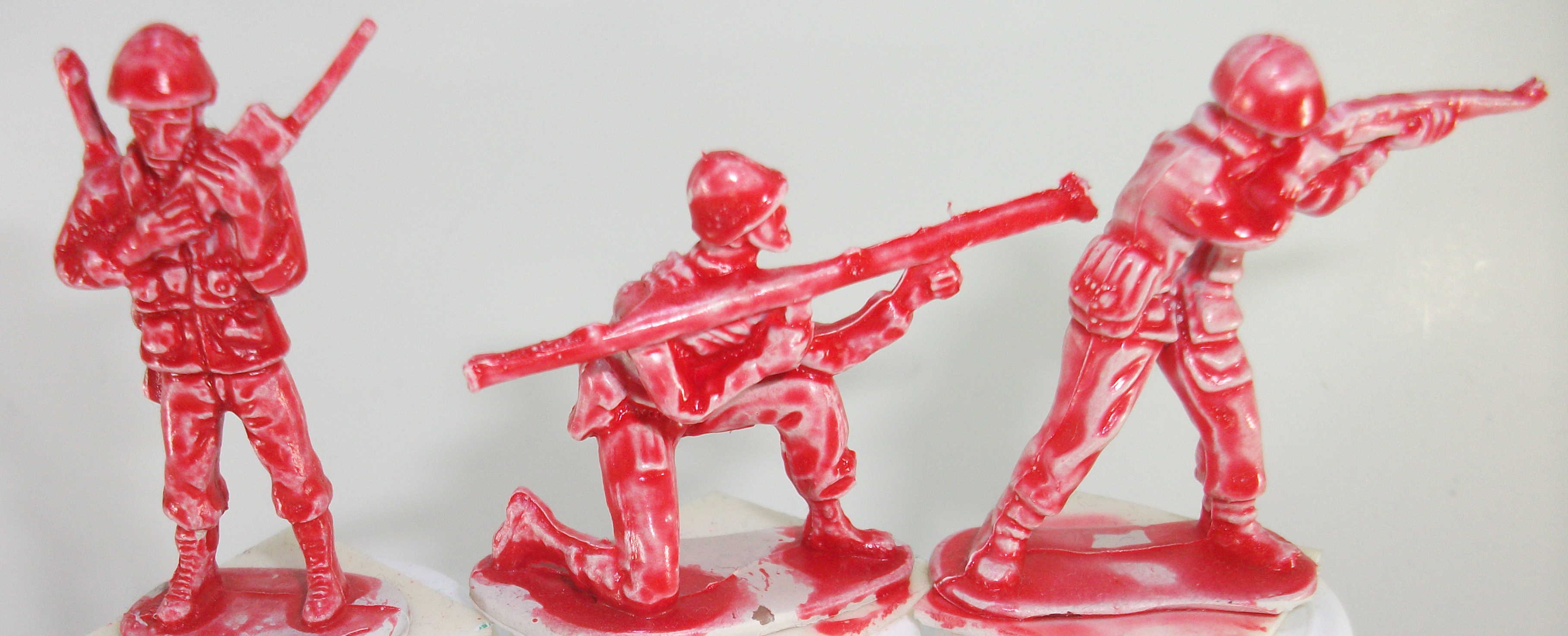 But, like I said above, this mix makes a great airbrush medium/thinner (no one actually carries any airbrush medium/thinner in any stores I've found locally to where I am, so I either have to order online, or make my own).
But, like I said above, this mix makes a great airbrush medium/thinner (no one actually carries any airbrush medium/thinner in any stores I've found locally to where I am, so I either have to order online, or make my own).
Experiment #2: DakkaDakka Matte Gel Medium tests - ummm, interesting, but still not very contrast paint like. Much closer, though, to what I was looking for.
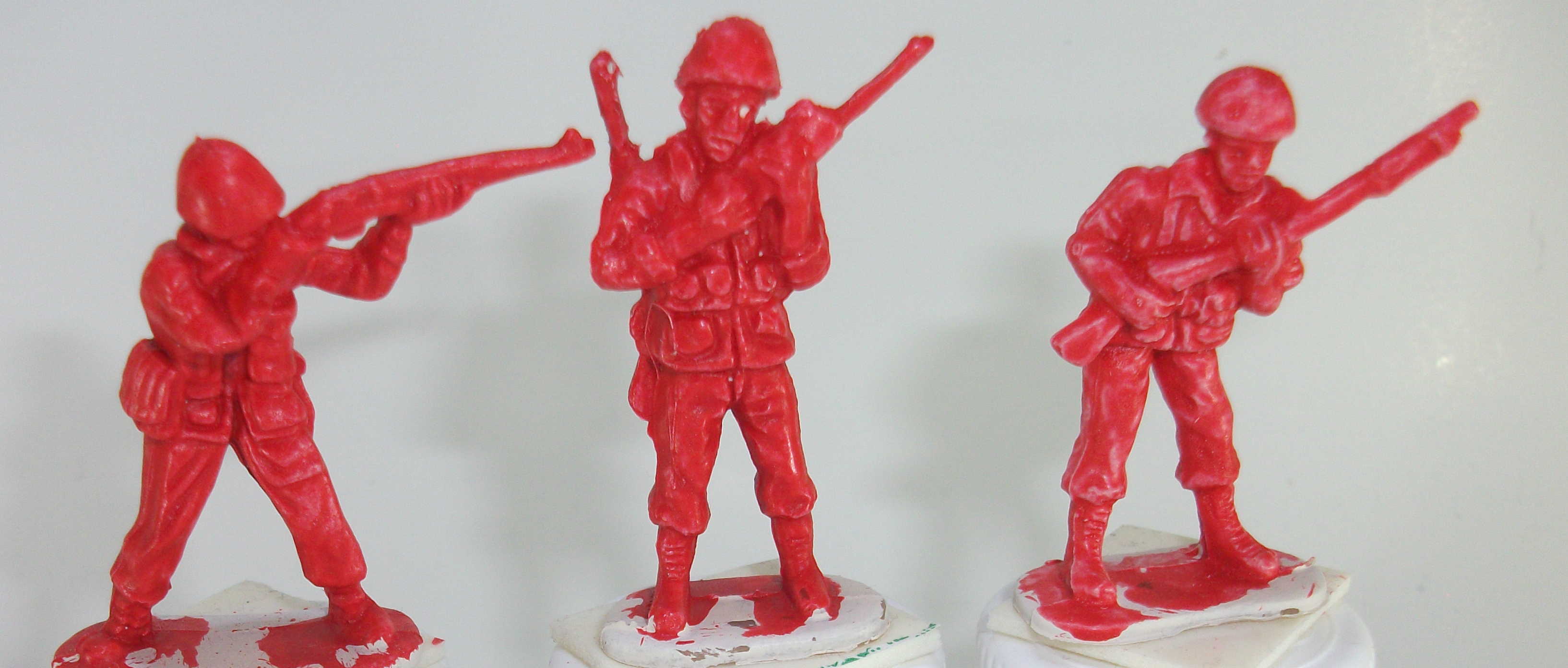 The 1:4 mix got especially close. This gave me hope that getting to a DIY alternative might actually be possible.
The 1:4 mix got especially close. This gave me hope that getting to a DIY alternative might actually be possible.
Experiment #3: Pouring Medium tests - FINALLY! The picture doesn't do this justice, it was much more like what I was looking for (blame my poor photography, or maybe I glopped on the paint too much -- I wasn't going for cleanliness, just a proof-of-concept).
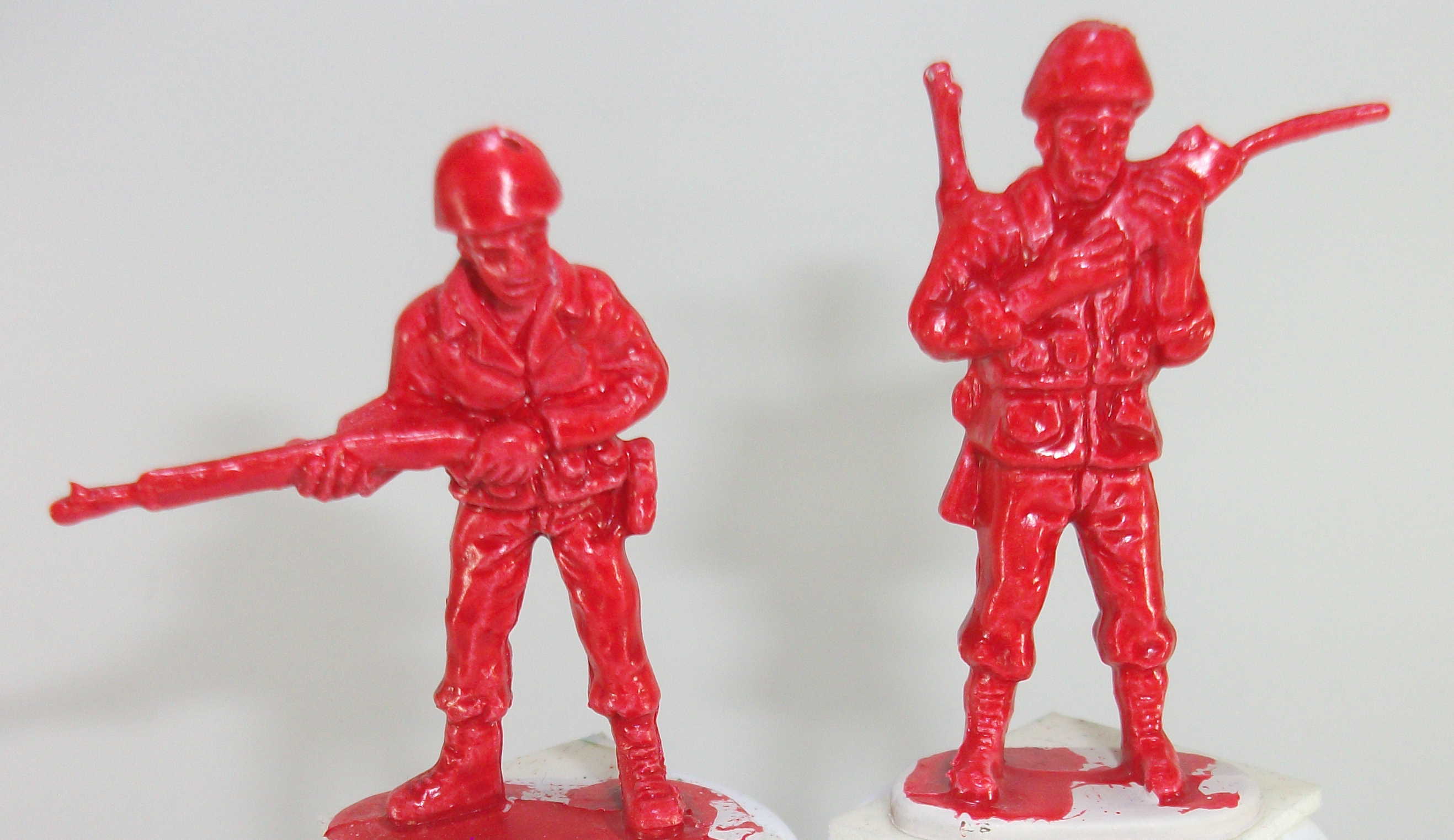 It's hard to see because of the glossy finish reflecting the light in the picture, but the 2:1 mix on the left looks better than the 1:2 mix on the right (though it looks like the opposite in this picture ... my further work on this mix and pigment tests below show better results).
It's hard to see because of the glossy finish reflecting the light in the picture, but the 2:1 mix on the left looks better than the 1:2 mix on the right (though it looks like the opposite in this picture ... my further work on this mix and pigment tests below show better results).
Experiment #4: What I call the "Mega" Mix. I thought, "Wait, if the Matte Gel got close, and the Pouring Medium got even closer, what about mixing the two recipes and seeing what I get?".
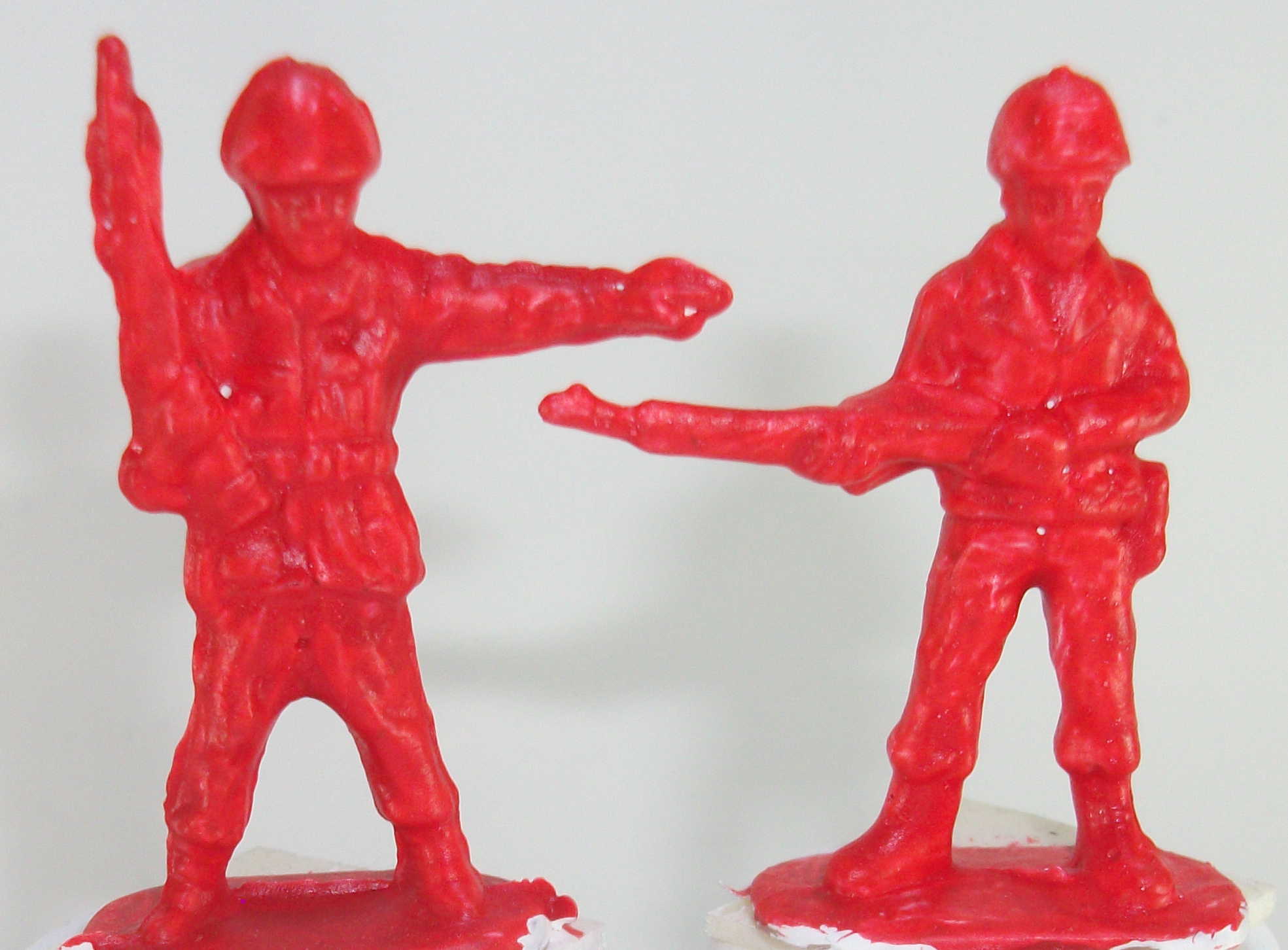 Ugh! I don't know what this is, but it isn't what I'm looking for. I have no idea even what I could use this mix FOR at ALL. All data is good data, and this data says don't do this again. And "No", the picture isn't blurry because of poor lighting or bad camera settings ... this is what it looked like IRL!
Ugh! I don't know what this is, but it isn't what I'm looking for. I have no idea even what I could use this mix FOR at ALL. All data is good data, and this data says don't do this again. And "No", the picture isn't blurry because of poor lighting or bad camera settings ... this is what it looked like IRL!
Okay, pouring medium is my starting point. So, next, I decided to actually try to recreate a specific contrast paint. I chose Citadel Colour Contrast Blood Angels Red (my son has Blood Angels that still need painting, and having a cheap, bulk replacement for Blood Angels Contrast would be nice). I had to REALLY look around before I finally found a hobby shop that had any. Most local stores have succumbed to the FLGS Apocalypse in the last decade (the lock-downs were just the final straw for most of the few remaining).
So, first, I needed a good exemplar to work from. This is where I discovered something ... contrast paints DO NOT LIKE GESSO!
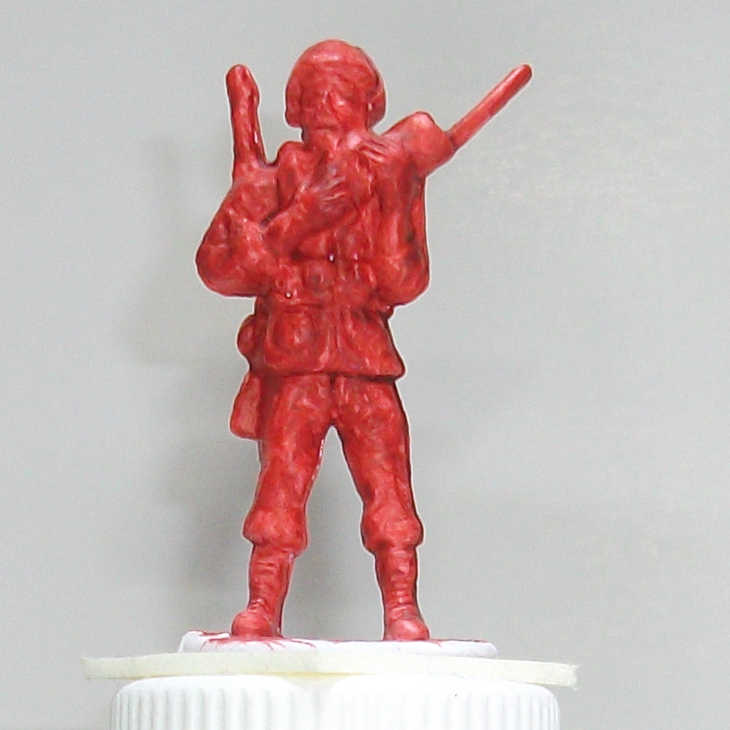 Now, I live in the Pacific Northwest. We spend most of the year with high humidity and a lot of rain. Rattle cans often are a no-go because of conditions, and my wife cannot stand the smell of the thinners used in the spray paint (so indoors spraying isn't going to happen). So I either can only ever work on priming miniatures outdoors on the few sunny, dry days we get in the spring or summer, or I had to come up with an alternative. After much research, I found that there were many hobbyists that swear by acrylic gesso. It is readily available at craft stores locally, and I can use it year round. And, I've figured out how to use it through an airbrush without issue. Priming With Acrylic Gesso is a great resource with lots of pictures and exposition on the use of gesso for priming. I highly recommend you check out the page.
Now, I live in the Pacific Northwest. We spend most of the year with high humidity and a lot of rain. Rattle cans often are a no-go because of conditions, and my wife cannot stand the smell of the thinners used in the spray paint (so indoors spraying isn't going to happen). So I either can only ever work on priming miniatures outdoors on the few sunny, dry days we get in the spring or summer, or I had to come up with an alternative. After much research, I found that there were many hobbyists that swear by acrylic gesso. It is readily available at craft stores locally, and I can use it year round. And, I've figured out how to use it through an airbrush without issue. Priming With Acrylic Gesso is a great resource with lots of pictures and exposition on the use of gesso for priming. I highly recommend you check out the page.
Now, I got flack for doing so, but I went out into the garage, and primed up a soldier with a Krylon Fusion White spray paint can. When she got home, HOURS later, my lovely wife IMMEDIATELY knew that I had been spray painting, even though I had not brought anything other than myself back into the house from the garage. Women have Vulcan levels of smell sense.
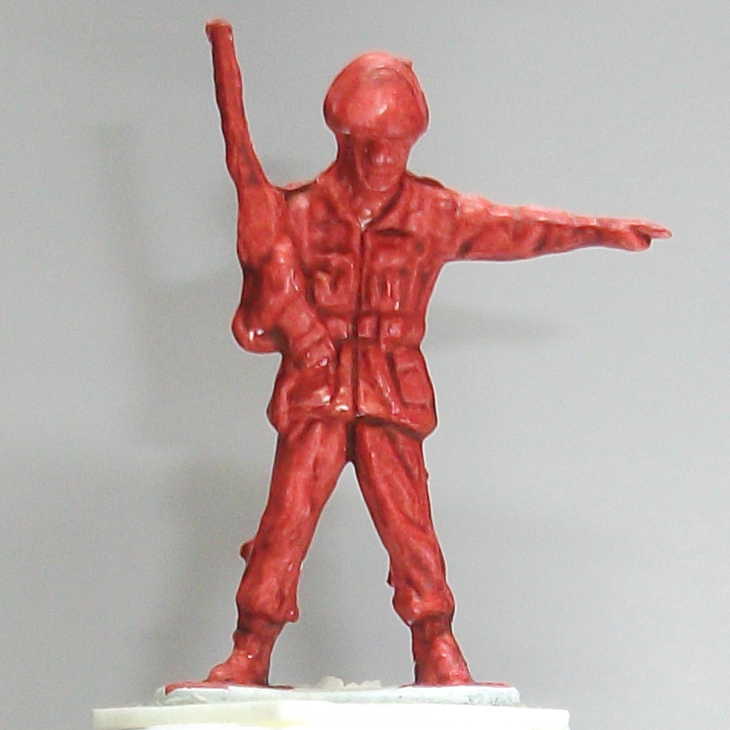
With my exemplar in hand, I wondered if I could get the gesso to actually work with contrast paint. I remembered some hobbyists in videos using varnishes over their figs before using contrast paints, shades and washes to achieve specific effects. So I did the same. 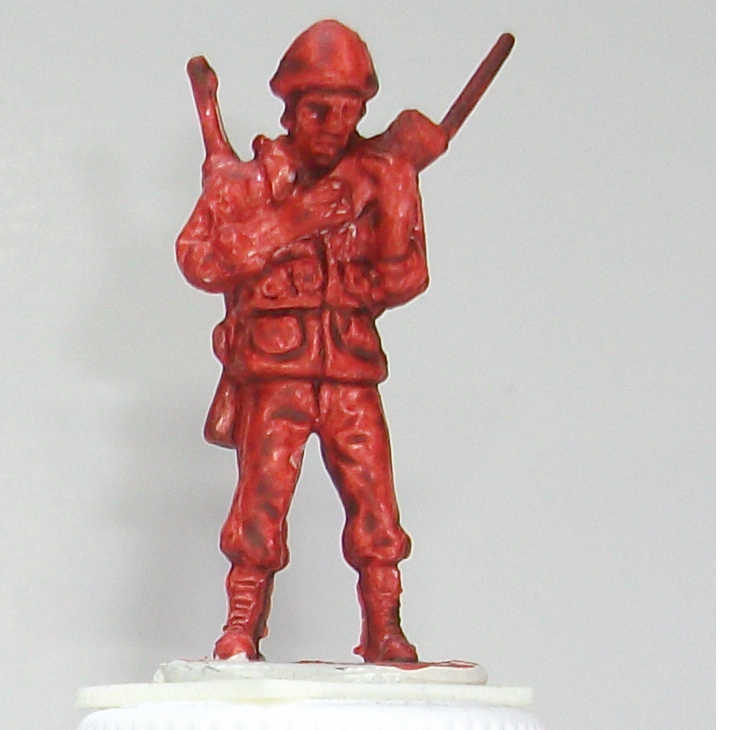
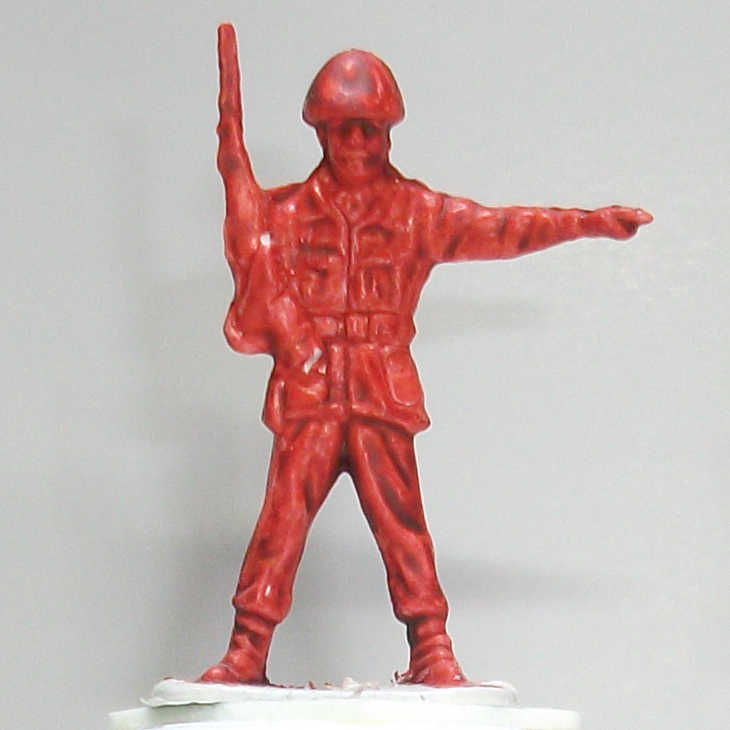
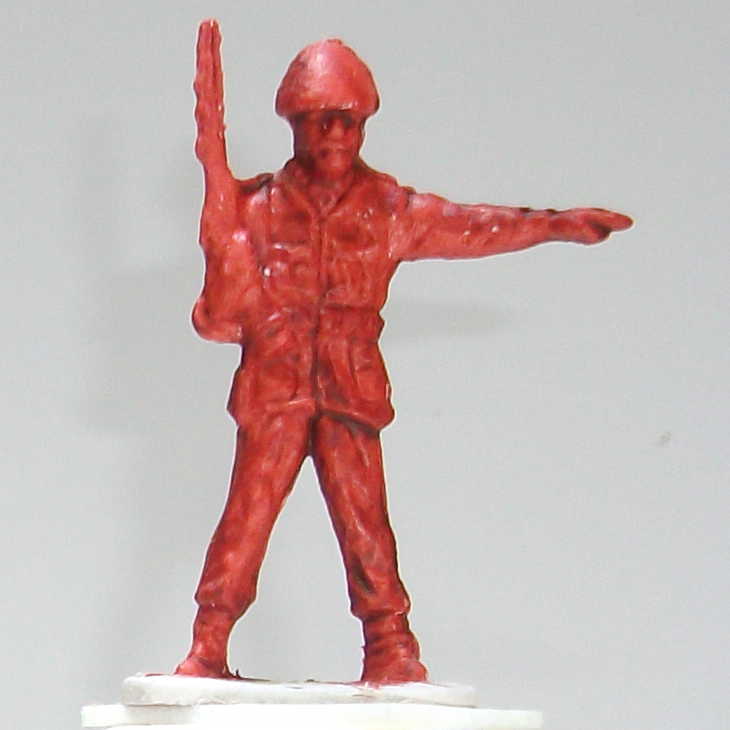 The satin varnished soldier looked the closest IRL. Now, onto recreating the pigmentation of my home-made contrast paint to look as close to Blood Angels Contrast as possible.
The satin varnished soldier looked the closest IRL. Now, onto recreating the pigmentation of my home-made contrast paint to look as close to Blood Angels Contrast as possible.
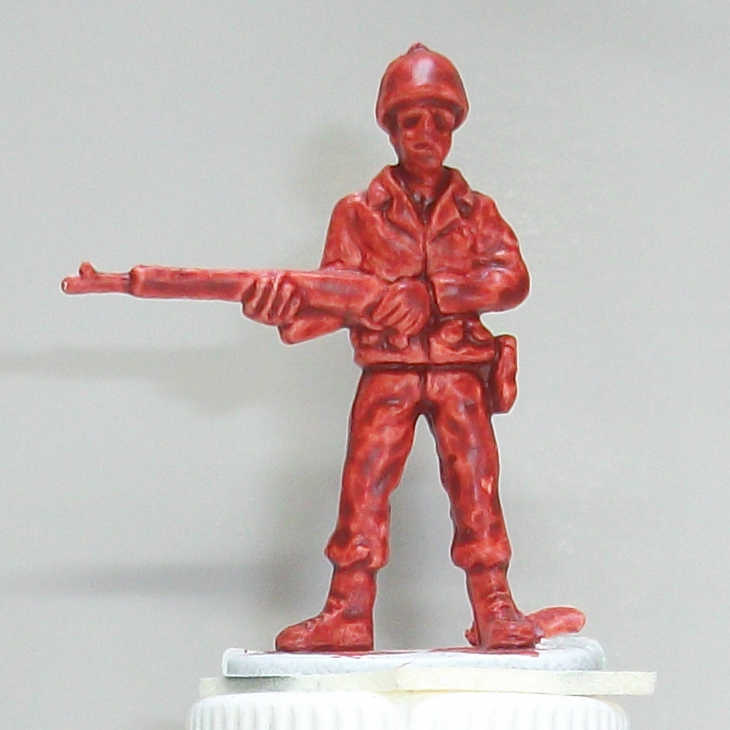
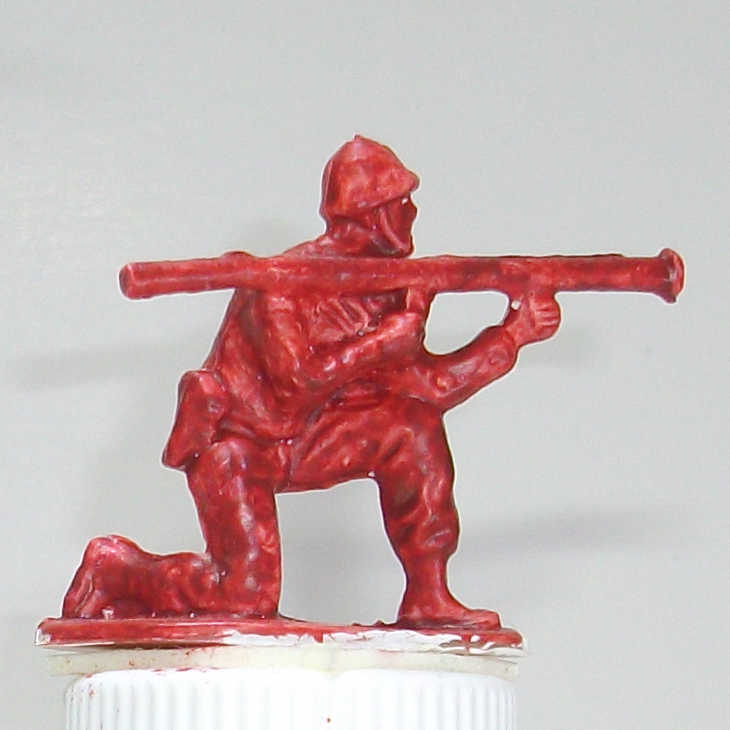
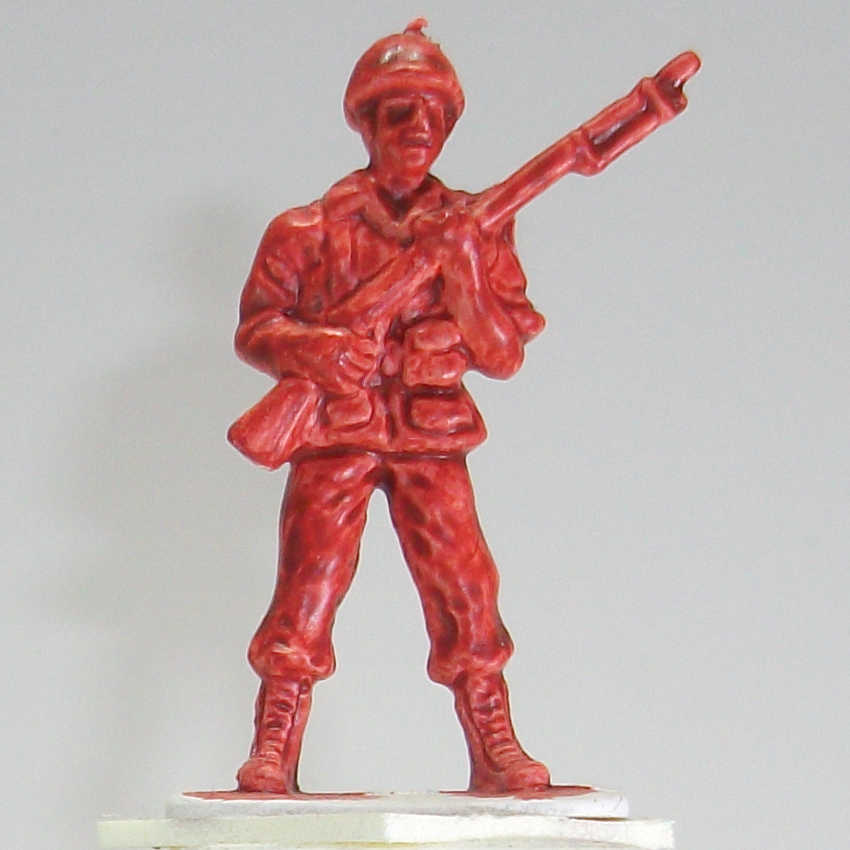 I decided that the 1:1 Daler-Rowney FW Crimson Acrylic Ink to Red Earth Acrylic Ink gave a very close approximation to Blood Angels Contrast (my mixes were all over a gesso prime - the pouring medium has no problem over gesso, unlike the contrast medium). As a check, I tried the ink mix over a prime of Krylon Fusion.
I decided that the 1:1 Daler-Rowney FW Crimson Acrylic Ink to Red Earth Acrylic Ink gave a very close approximation to Blood Angels Contrast (my mixes were all over a gesso prime - the pouring medium has no problem over gesso, unlike the contrast medium). As a check, I tried the ink mix over a prime of Krylon Fusion.  Oddly enough, the exact same mix came out looking darker? That didn't make sense. Looked okay, otherwise. And, for a further test, I added a little bit of glaze medium to the mix and tried that over a gesso prime.
Oddly enough, the exact same mix came out looking darker? That didn't make sense. Looked okay, otherwise. And, for a further test, I added a little bit of glaze medium to the mix and tried that over a gesso prime. 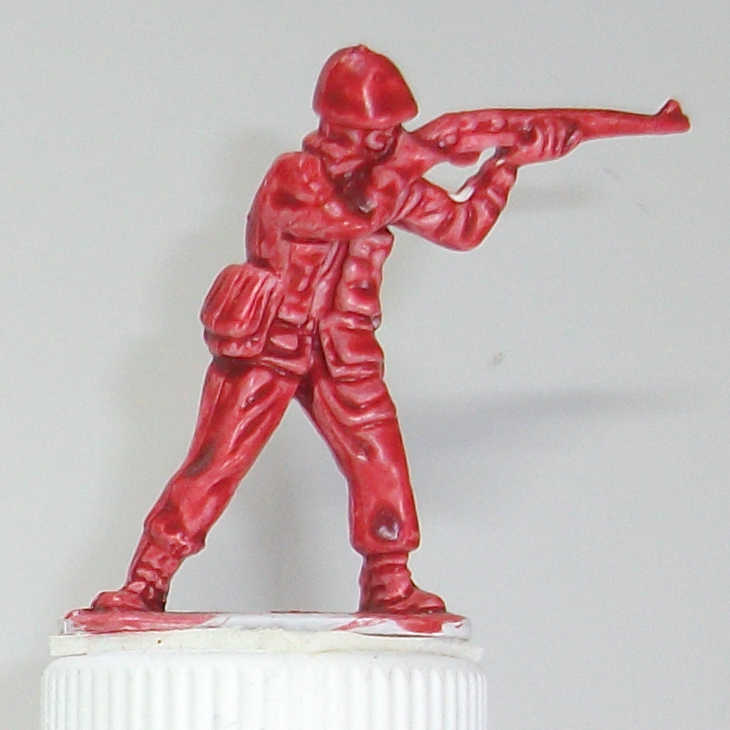 That didn't look too bad. There may be uses for this type of mix as well. While the glazing medium lightened the overall tone, it also enhanced the highlighting effect. This might do very well over a slap-chop or zenithal prime.
That didn't look too bad. There may be uses for this type of mix as well. While the glazing medium lightened the overall tone, it also enhanced the highlighting effect. This might do very well over a slap-chop or zenithal prime.
Conclusions
So, overall, a very quick substitute for a contrast paint would be a 2:1 mix of acrylic ink to pouring medium. Both ingredients are readily available at craft and art stores all over (I get mine at the local Michaels). It could be quite a pain to get exact pigment matches to existing products, but if you don't care and are happy mixing your own colors to achieve your personal mixes, then this is an advantage. And the cost savings is a BIG advantage (I calculated out the price/oz. for Citadel Contrast paints, and it comes to $13-$23 depending on who you buy it from, but my home-made example above comes to only $5.37/oz., and I end up with enough material to make a LOT more. Also, they often have the inks on sale, and that can drive the price/oz. for my mix down to under $3, depending on the discount).